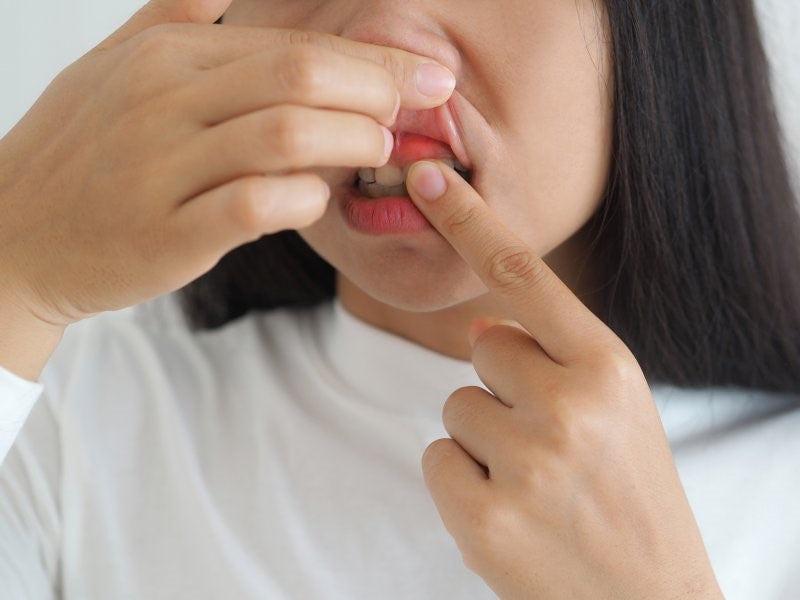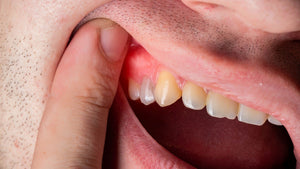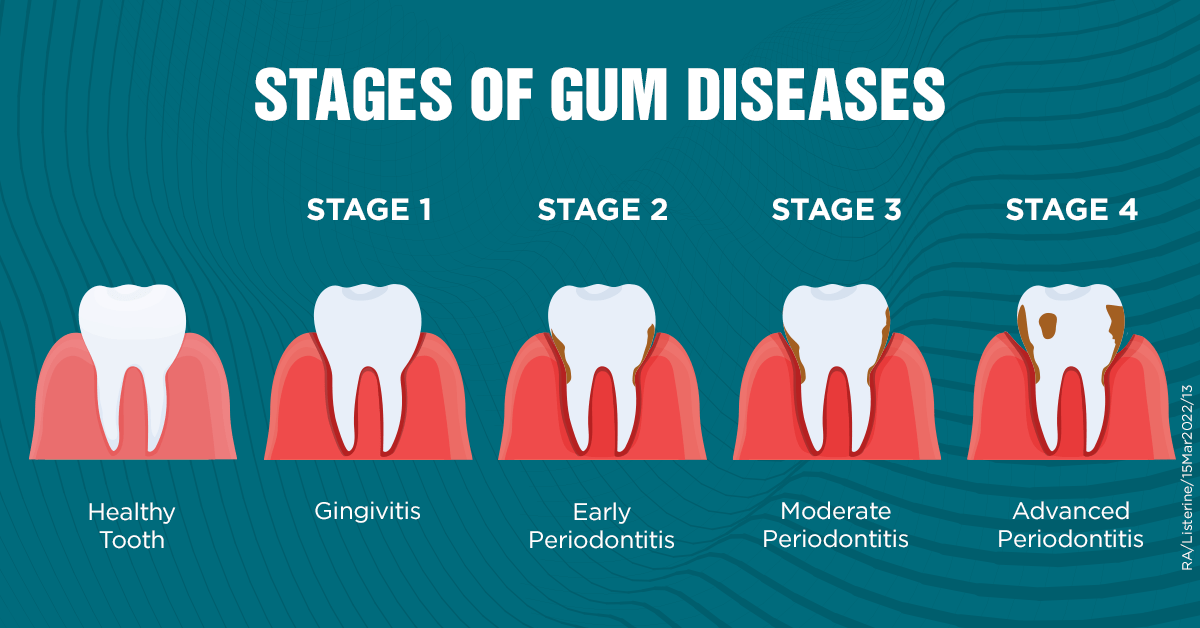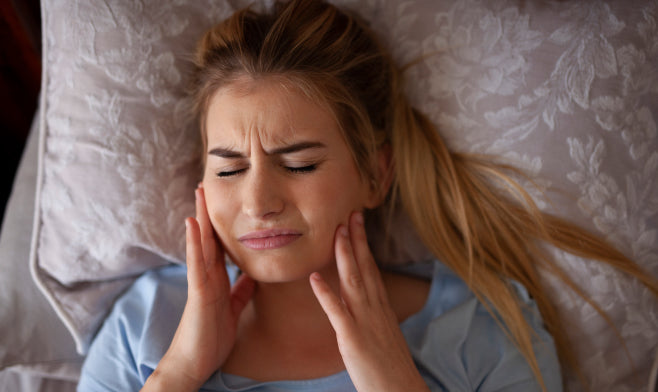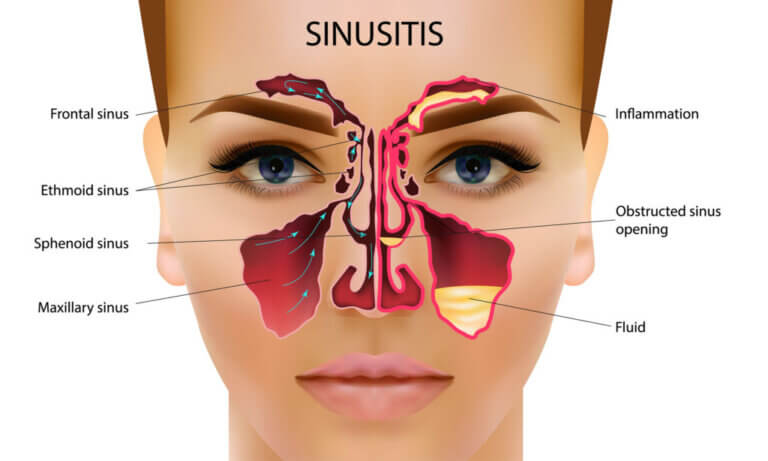You brush your teeth and your tongue catches something bumpy. A little, mushy lump in your gums which was not there before. You get a jump-start in your heart. What is it? Are you supposed to be concerned? You should.
Millions of people, at some point in life, come across mysterious bumps on their gums. These unpleasant guests may be harmless nuisances or even symptoms of some oral health problems. The positive news? A majority of the gum bumps are curable and many can be avoided altogether with the right treatment.
Gum bumps can be simply defined as an inflamed or swollen tissue on some portion of your gum line, which comes out as a bump. They may be tender or tough, might hurt or not hurt, and may range hugely in size and color. Some of these may heal within a few days on their own - but others need treatment.
Learning how to get rid of bumps on your gums should begin with identifying the type of bump you have. Depending on the presence of bacterial or natural tissue growths, every type of bump has its distinguishing characteristics and treatment requirement.
In this guide, we will consider all levels of coping, including short-term relief measures, and prevention approaches, so you find the information you need to achieve partnering healthiest gums.
Gum Bumps: What Causes Them?
The Anatomy Behind Gum Bump Formation
Gums are composed of sensitive soft tissues that wrap and shelter your teeth. This is an extremely strong tissue that regenerates and heals against slight injuries, from time to time. But in the situation where this tissue is inflamed or infected, then it is liable to swell up and create noticeable swellings.
It generally starts with irritation. Possibly, it is because you have been brushing too hard, or bacteria have found their way into minuscule holes in the gum tissue. The way your body reacts to that is called inflammation: more blood flowing to the scene, kickstarting immune cells to defend themselves against possible infection. This immune reaction leads to swelling, redness and the development of the worrying bumps.
To understand how to get rid of bumps on your gums, you need to know about the basic process. It is not the bump itself that is a problem, but an attempt of your body to heal. Nevertheless, unless the underlying problem is taken care of, the inflammation is not resolved, and the bump does not go.
Common Triggers And Risk Factors
The formation of gum bumps can be induced by a number of factors. It is led by poor oral hygiene. Plaque and bacteria that build up along the gum line - causing a suitable condition for inflammation and infection.
Physical trauma plays a big role too. Aggressive brushing, biting or going rough on teeth can destroy gums. Apart from that, as little as eating tortilla chips, or any sharp food, can cause microscopic cuts that inflame.
Moving forward, another thing that affects gum health is hormonal change. Sensitive gums are likely to swell during pregnancy and menstruation, and due to menopause. Also, some medications, stress, and complications of underlying illness such as diabetes can put you at risk of getting gum bumps.
Types of Gum Bumps: Identifying Your Specific Problem
Gum Boils (Dental Abscesses)
One of the most severe kinds of gum bumps that you may get is the gum boils. These are the painful, puss filled swellings that usually appear as red or yellowish bumps usually close to the base of a tooth. They are more or less an attempt of your body to drain an infection.
The infection normally begins deep in the tooth or at the root and this is usually caused by severe decay or trauma. Bacteria increase and result in pressure, which forms a new route along the bone and gum tissue. The result? A squishy tender and throbbing lump that screams for battering.

Therefore, it is pertinent to know how to get rid of bumps on your gums, especially, when it is an abscess. These types of bumps must go through professional dental care - because when left untreated, the infection may spread to other sections of your body and may lead to serious complications.
Gingivitis Bumps
Gingivitis bumps are inflammation-related swellings that occur when plaque irritates your gums. Unlike abscesses, these bumps are typically pink or red, soft to the touch, and may bleed easily when brushed or touched.
These bumps often appear along the gum line where plaque accumulates most readily. The message that your gums are trying to send you is, "Hey, we want to be cleaned better here!" Moreover, the savory part is that gingivitis bumps clears up with better oral care and may be solved in one week or two of regular attention.
The trick is to intervene early. Without intervention, gingivitis may develop into something worse - called the periodontal disease, which might cause tooth loss as well.
Gum Cysts
Aphthous ulcers known as canker sores may sometimes develop on the gum tissue. They are painful blisters and their center is usually white or yellow with a reddish rim. In contrast to other gum bumps, canker sores are really shallow sores instead of elevated bumps.
Gum cysts are usually painless but can be uncomfortable when they become too big, and make it difficult to eat or speak. Cysts have the tendency to resolve in most cases, however, some need professional intervention or surgical excision.
The secret is to control the cysts by observing its size and whether or not symptoms alter. When a cyst hurts all of a sudden, changes color, or enlarges at a fast rate, it is high time to seek an expert.
Canker Sores on Gums
Aphthous ulcers known as canker sores may sometimes develop on the gum tissue. They are painful blisters and their center is usually white or yellow with a reddish rim. In contrast to other gum bumps, canker sores are really shallow sores instead of elevated bumps.
Canker sores may be occasioned by stress, minor injuries, some foods or change of immune system. They are especially irritating due to the ability to cause discomfort when a person eats and talks. Luckily, the majority of canker sores improve within a period of 7-14 days.
Knowing how to get rid of bumps on your gums when they're canker sores involves primarily pain management and avoiding irritating foods while your body heals naturally.
Less Common But Important Bump Types
Fibroma Formation
Fibromas are benign growths that develop when your gums repeatedly experience irritation. Think of them as your body's way of creating extra protective tissue. These firm, usually painless bumps often result from chronic irritation from ill-fitting dentures, rough teeth, or habitual cheek biting.
Fibromas typically appear pink or white and have a smooth, dome-like appearance. Unlike inflammatory bumps, fibromas don't usually resolve on their own. They're composed of mature scar tissue that requires professional removal if they interfere with daily activities.
The best approach for managing fibromas involves identifying and eliminating the source of chronic irritation. Understanding how to get rid of bumps on your gums includes recognizing when professional intervention is necessary rather than attempting home treatment.
Pyogenic Granuloma
Despite its intimidating name, pyogenic granuloma isn't actually filled with pus or caused by infection. These reactive tissue growths appear as red, soft bumps that bleed easily when touched. They often develop rapidly following minor trauma or during pregnancy due to hormonal changes.
Pregnancy-related pyogenic granulomas, sometimes called "pregnancy tumors," are particularly common during the second trimester. These benign growths typically shrink after delivery as hormone levels normalize.
Professional removal is usually recommended for pyogenic granulomas since they tend to recur if not completely excised. However, pregnancy-related lesions might be monitored rather than immediately treated.
Mandibular Torus
Mandibular tori are bony protrusions that develop on the inside of your lower jaw, near the tongue. These hard, painless bumps are entirely benign and often run in families. They grow slowly over time and typically don't require treatment unless they interfere with dental work or oral hygiene.
Unlike soft tissue bumps, mandibular tori are composed of normal bone tissue. They can't be treated with medications or home remedies – surgical removal is the only option if treatment becomes necessary.
Most people with mandibular tori live their entire lives without any problems. However, they can make dental impressions challenging and may require special considerations for dentures or other dental appliances.
Comparison of Gum Bump Types
Knowing the different types of gum bumps can help you determine the appropriate response and treatment urgency. Here's a comprehensive comparison to guide your decision-making:
|
Bump Type |
Appearance |
Pain Level |
Common Causes |
Treatment Urgency |
|
Gum Boils |
Red, swollen, pus-filled |
High |
Bacterial infection, tooth decay |
Immediate |
|
Gingivitis Bumps |
Pink/red, soft, may bleed |
Moderate |
Poor hygiene, plaque buildup |
Within days |
|
Cysts |
Smooth, round, firm or soft |
Low-moderate |
Blocked glands, trauma |
Varies |
|
Canker Sores |
White/yellow center, red border |
High |
Stress, injury, immune factors |
1-2 weeks |
|
Fibroma |
Firm, pink/white, smooth |
Low |
Chronic irritation |
Non-urgent |
|
Pyogenic Granuloma |
Red, soft, bleeds easily |
Moderate |
Hormones, trauma |
Moderate |
|
Mandibular Torus |
Hard, bony, painless |
None |
Genetic factors |
Optional |
This comparison highlights why proper identification is crucial when learning how to get rid of bumps on your gums. Each type requires a different approach, and misidentification can lead to ineffective treatment or unnecessary worry.
The pain level and treatment urgency columns are particularly important for prioritizing care. While gum boils require immediate attention, mandibular tori might never need treatment at all.
When to See a Dentist: Red Flags You Shouldn't Ignore
Emergency Symptoms
Certain symptoms accompanying gum bumps warrant immediate professional attention. Severe pain that interferes with sleep or daily activities shouldn't be ignored. If you're experiencing throbbing pain that seems to pulse with your heartbeat, especially with a visible bump, you might be dealing with an abscess.

Fever accompanying gum bumps is another serious red flag. This suggests that infection might be spreading beyond the localized area. Similarly, swelling that extends to your face, neck, or throat requires immediate medical attention, as it could indicate a spreading infection.
Difficulty swallowing, opening your mouth, or breathing are emergency symptoms that require immediate care. These signs suggest that swelling is affecting critical functions and could potentially become life-threatening if left untreated.
Persistent Issues
Not all concerning symptoms are emergencies, but they still warrant professional evaluation. Bumps that persist for more than two weeks without improvement should be examined by a dental professional. While many bumps resolve naturally, persistent ones might indicate underlying issues requiring treatment.
Recurring bumps in the same location are particularly concerning. This pattern often suggests an ongoing problem that won't resolve without addressing the root cause. Whether it's a problematic tooth, chronic irritation, or another underlying condition, recurring bumps need professional diagnosis.
Changes in bump appearance, such as rapid growth, color changes, or the development of irregular borders, should prompt immediate consultation. Understanding how to get rid of bumps on your gums includes recognizing when home treatment isn't appropriate and professional care is essential.
Professional Treatment Options: What Your Dentist Can Do
Diagnostic Procedures
Professional evaluation begins with a thorough visual examination. Your dentist will assess the bump's size, color, texture, and location, often using specialized lighting and magnification. They'll also review your medical history and any symptoms you've experienced.
X-rays might be necessary to evaluate underlying structures. For example, if an abscess is suspected, X-rays can reveal bone loss or other complications. Sometimes, additional imaging like CT scans might be recommended for complex cases.
In rare instances, a biopsy might be necessary. This involves removing a small tissue sample for laboratory analysis, particularly if there's any concern about the bump's nature or if it doesn't respond to initial treatment.
Medical Interventions
Treatment varies dramatically based on the bump type and severity. Abscesses typically require drainage to remove infected material, followed by thorough cleaning and antibiotic treatment. This procedure provides immediate relief and prevents the infection from spreading.
Antibiotic therapy might be prescribed for bacterial infections, though topical treatments are often preferred for localized gum issues. Your dentist might recommend prescription-strength antimicrobial rinses or gels.
Some bumps require surgical removal, particularly fibromas or large cysts. These minor procedures are typically performed under local anesthesia in the dental office.
Understanding how to get rid of bumps on your gums sometimes means accepting that professional intervention is the most effective approach.
Specialized Treatments
Modern dentistry offers advanced treatment options for complex cases. Laser therapy can be effective for certain types of gum bumps, offering precise tissue removal with minimal discomfort and faster healing.
Periodontal procedures might be necessary if gum bumps are related to advanced gum disease. These treatments focus on eliminating infection and restoring healthy gum tissue attachment to teeth.
Some cases benefit from combination therapies, such as surgical treatment followed by specialized oral care products to prevent recurrence and promote optimal healing.
Natural Home Remedies: Gentle Solutions For Gum Bump Relief
Salt Water Rinses
Salt water rinses are perhaps the most time-tested home remedy for gum issues. Salt creates an inhospitable environment for bacteria while drawing out excess fluid from swollen tissues. The osmotic effect helps reduce inflammation and can provide significant relief.
To prepare an effective salt water rinse, dissolve one teaspoon of salt in a cup of warm water. Rinse gently for 30 seconds, focusing on the affected area, then spit out the solution. Repeat this process 2-3 times daily, especially after meals.
The beauty of salt water rinses lies in their simplicity and safety. They're gentle enough for frequent use and can be particularly effective when learning how to get rid of bumps on your gums using natural methods.
Cold Compress Applications
Cold therapy can provide immediate relief from pain and swelling associated with gum bumps. The cold temperature numbs the area while reducing inflammation by constricting blood vessels.
Apply a cold compress to the outside of your cheek for 15-20 minutes at a time. Use a cloth barrier to prevent ice burn, and never apply ice directly to your gums. This technique is particularly effective for acute swelling and pain.
Cold compresses work best when used early in the inflammatory process. They're an excellent first-aid measure while you're determining whether professional treatment is necessary.
Herbal Remedies
Tea tree oil possesses natural antibacterial and anti-inflammatory properties that can help combat gum infections. However, it must be properly diluted – never apply pure tea tree oil directly to your gums. Mix a few drops with a carrier oil like coconut oil before gentle application.
Turmeric paste combines anti-inflammatory and antimicrobial benefits. Mix turmeric powder with a small amount of water to create a paste, apply to the affected area for 10 minutes, then rinse thoroughly. The active compound curcumin has been studied for its oral health benefits.
Aloe vera gel offers soothing relief for irritated gum tissue. Use pure aloe vera gel (not products with added ingredients) and apply directly to the bump. Its cooling effect provides comfort while natural compounds promote healing.
The Goodbye Company Gum Disease Solution
For those seeking a comprehensive natural approach to gum health, The Goodbye Company Gum Disease offers an innovative solution. This all-natural oral care product combines the healing power of Omega 3 and 9 oils with the antimicrobial properties of neem and clove essential oils.
The omega fatty acids in this formulation help reduce inflammation naturally, while neem has been used for centuries in traditional medicine for oral health. Clove essential oil provides natural pain relief and antimicrobial action, making this combination particularly effective for preventing and treating gingivitis-related bumps.
If you're currently dealing with bleeding gums, tooth pain, or sensitivity to hot and cold temperatures, incorporating The Goodbye Company Gum Disease into your daily routine can provide natural relief. Understanding how to get rid of bumps on your gums often involves addressing underlying gum disease, and this natural solution targets the root causes rather than just masking symptoms.
The product works best as both a preventative measure and a treatment aid, supporting your body's natural healing processes while maintaining optimal oral health.
Prevention Strategies: Keeping Gum Bumps at Bay
Consistency is key when it comes to preventing gum bumps. Establish a morning and evening oral care routine that includes thorough brushing, flossing, and rinsing. Make it non-negotiable, like any other essential daily activity.
Consider integrating natural products like The Goodbye Company Gum Disease into your routine for added protection. The anti-inflammatory and antimicrobial properties of its natural ingredients provide ongoing support for gum health.
Pay attention to your mouth throughout the day. Notice any changes in your gums, unusual tastes, or discomfort that might signal developing problems. Early detection allows for prompt intervention.
Managing Pain And Discomfort: Comfort Measures
Over-the-Counter Options
Non-prescription pain relievers can provide significant relief while your gums heal. Ibuprofen is particularly effective because it addresses both pain and inflammation. Follow package directions and consult with a healthcare provider if you have any medical conditions or take other medications.
Topical anesthetics containing benzocaine can provide temporary numbing relief. Apply according to package instructions, being careful not to overuse these products as they can cause tissue irritation with excessive application.
Some people find that alternating between different types of pain relief (such as ibuprofen and acetaminophen) provides better control, but always consult with a healthcare provider before combining medications.
Natural Pain Management
Natural pain management techniques can complement other treatments effectively. Clove oil contains eugenol, a natural anesthetic compound that's been used for dental pain for centuries. Apply a tiny amount with a cotton swab, being careful to avoid swallowing.
Cold therapy continues to be effective for ongoing pain management. Alternate between cold compresses and normal temperatures to prevent tissue damage while maintaining pain relief.
Learning how to get rid of bumps on your gums includes managing associated discomfort naturally while your body heals. Gentle techniques that support rather than interfere with natural healing processes often provide the best long-term results.
FAQs - How to Get Rid of Bumps on YOu
How long does it take to get rid of bumps on your gums naturally?
The healing time varies significantly depending on the type and cause of the bump. Gingivitis-related bumps often improve within a week of enhanced oral hygiene, while canker sores typically heal within 7-14 days.
Can gum bumps be cancerous?
Any bump that doesn't heal within two weeks, changes in appearance, or is accompanied by other concerning symptoms should be evaluated by a dental professional. Early detection is crucial for successful treatment of any serious conditions.
Are gum bumps contagious?
Generally, gum bumps themselves are not contagious. However, if the bump is caused by a bacterial or viral infection, the underlying pathogen might be transmissible through close contact or sharing utensils.
Can children get gum bumps?
Yes, children can develop gum bumps for many of the same reasons as adults. Poor oral hygiene, minor injuries from falls or sports, and erupting teeth can all cause gum swelling in children.
How can I prevent gum bumps from returning?
Daily brushing and flossing, regular dental checkups, stress management, and avoiding trauma to your gums are all important. Using quality oral care products like The Goodbye Company Gum Disease can provide additional protection through natural anti-inflammatory and antimicrobial ingredients.
Is it safe to pop or squeeze gum bumps?
Never attempt to pop or squeeze gum bumps. This can introduce additional bacteria, spread infection, cause more tissue damage, and delay healing.
Can stress cause gum bumps?
Stress can contribute to gum bump formation in several ways. It suppresses immune function, making you more susceptible to infections.
How effective is The Goodbye Company Gum Disease for preventing gum bumps?
The Goodbye Company Gum Disease can be highly effective for preventing inflammation-related gum bumps. Its combination of omega fatty acids helps reduce inflammation naturally, while neem and clove essential oils provide antimicrobial action against harmful bacteria.
Outlook
And that’s how to get rid of bumps on your gums! Doing so empowers you to take control of your oral health and respond appropriately to various situations.
Prevention remains the most effective strategy for avoiding gum bumps entirely. Consistent oral hygiene, regular professional care, stress management, and quality products like The Goodbye Company Gum Disease oral solution create an environment where gum problems are far less likely to develop.
The natural anti-inflammatory and antimicrobial properties of omega oils, neem, and clove provide ongoing protection that supports your body's natural healing abilities.


